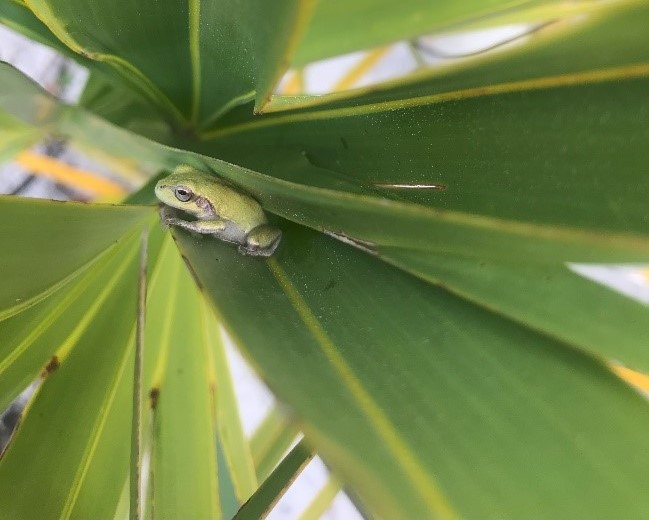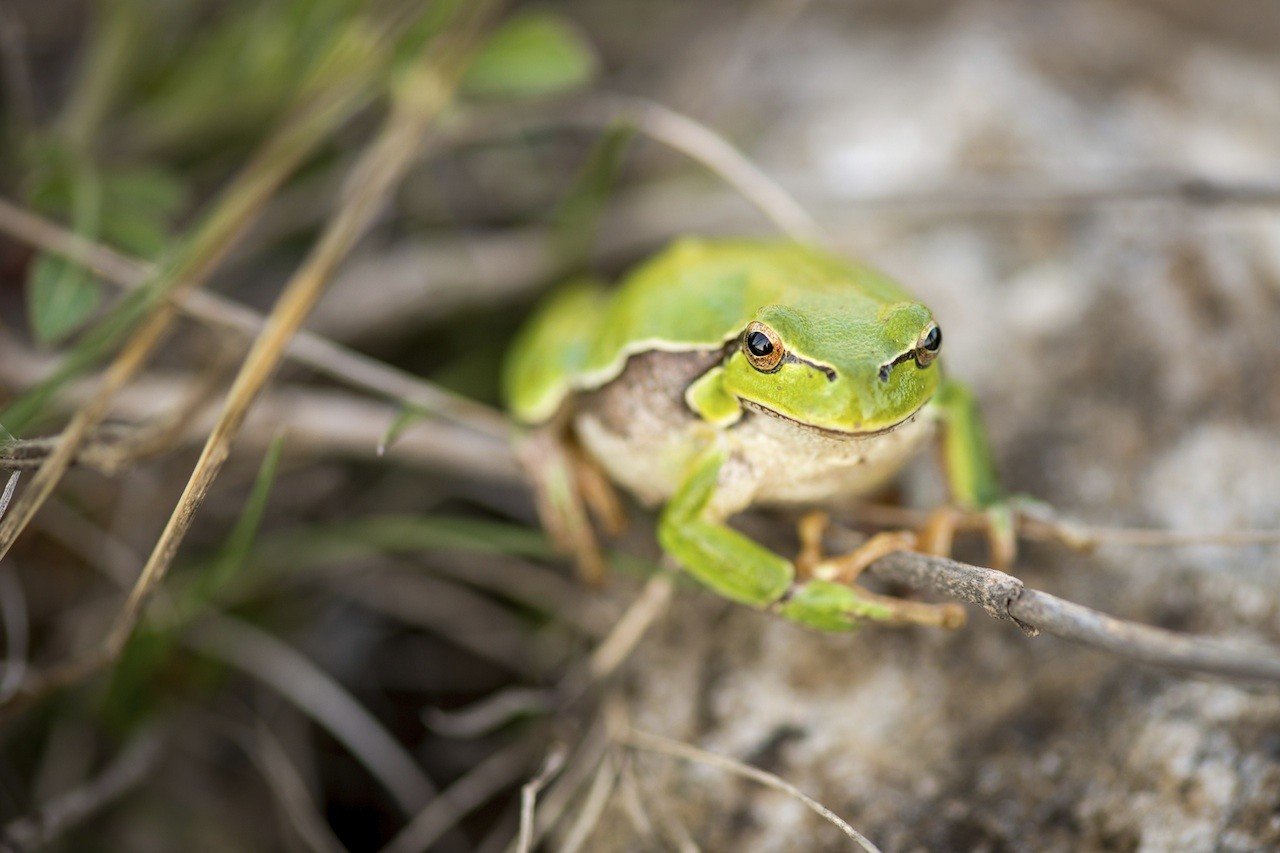Tree frog traps are used to catch tree frogs by using special lures that mimic their natural targets. These traps are effective in capturing frogs and can be placed in areas where they are commonly found.
By using ground up insects and pheromones, tree frog traps are able to attract and capture these amphibians. Whether you want to remove tree frogs from your house or create a hangout for them in your garden, there are various trapping methods and repellents available.
From glueboard traps to building your own frog trap, there are several techniques to choose from. Additionally, using vinegar as a spray can also help deter tree frogs from your yard.
Types Of Tree Frog Traps
When it comes to tree frog traps, there are several different types available in the market. Each type has its own pros and cons. One popular option is glueboard traps, which can be used to capture tree frogs that are found in your house. These traps are effective in catching the frogs, but they can be messy and may require frequent replacement.
Another method is the use of drift fences, which are commonly used by scientists and hobbyists to study various animals. Drift fences can be an easy and efficient way to trap tree frogs, but they may require some setup and maintenance.
Alternatively, you can also catch tree frogs by hand. However, it is important to use a plastic bag to cover your hand to avoid direct contact with the frogs. This method is simple and effective, but it can be time-consuming and may not be suitable for all situations.
Overall, the best way to trap tree frogs depends on your specific needs and preferences. It is recommended to consider factors such as effectiveness, convenience, and ease of use when choosing a trap. Additionally, it is important to follow any local laws and regulations regarding trapping and releasing tree frogs.
Attracting Tree Frogs To Your Garden
| Plants and Landscaping Techniques to Attract Tree Frogs |
|---|
| – Create a diverse garden with a variety of plant species that provide shelter and food for tree frogs. |
| – Include native plants, as they are more likely to attract native frogs. |
| – Plant trees and shrubs that offer ample hiding spots and climbing opportunities. |
| – Incorporate water features, such as a pond or a small water garden, to provide drinking and breeding sites. |
| – Avoid using pesticides, as they can harm tree frogs and their food sources. |
| – Create a damp and moist environment by adding mulch and leaf litter. |
Attracting tree frogs to your garden requires creating a suitable environment for them. One of the most important factors is selecting the right plants and utilizing effective landscaping techniques. Creating a diverse garden with a variety of plant species is crucial.
Native plants are preferable as they are more likely to attract native frogs. Planting trees and shrubs that offer ample hiding spots and climbing opportunities is another way to attract tree frogs.
Incorporating water features such as a pond or a small water garden can provide drinking and breeding sites. It is important to avoid using pesticides, as they can harm tree frogs and their food sources.
Additionally, creating a damp and moist environment by adding mulch and leaf litter can also be beneficial.
Understanding The Behavior Of Tree Frogs
Tree frogs can be beneficial for controlling pests due to their natural habitat and behavior. They are attracted to insects, making them a natural predator for pests such as mosquitoes and flies. Tree frogs use their sticky tongues to catch insects in mid-air, as well as in trees and on plants.
They are also known to eat spiders, beetles, and other small pests. By keeping the population of these pests under control, tree frogs can help maintain a balanced ecosystem in your garden or backyard.
Setting Up Tree Frog Traps In Your Garden
Tree Frog Traps are an effective way to control and manage tree frog populations in your garden. Choosing the right location for placing tree frog traps is crucial for their success. Here are a few tips to set up tree frog traps effectively:
- Identify areas where tree frogs are commonly found, such as near water sources or plants.
- Place the traps in shady and damp areas, as tree frogs are attracted to these conditions.
- Use lures that mimic the natural prey of tree frogs, such as insects and pheromones.
- Regularly check the traps and remove any captured tree frogs to prevent harm.
- Avoid using harmful chemicals or pesticides that can harm other wildlife and the environment.
- Consider using humane traps that allow you to release the captured tree frogs safely.
By setting up tree frog traps effectively, you can help maintain a balance in your garden ecosystem while minimizing potential damage caused by tree frogs.
Maintaining Tree Frog Traps For Optimal Performance
Tree frog traps are a popular method for controlling tree frog populations, and maintaining optimal performance requires regular cleaning and maintenance. Common issues with tree frog traps can include clogging, odor, and attractant depletion.
To fix these problems, it’s important to clean the traps regularly, removing any debris or trapped frogs. Additionally, check the traps for any signs of wear or damage and replace them if necessary. To prevent odor, consider using odor-reducing products or adding baking soda to the traps.
Finally, regularly replenish the attractant lure to ensure its effectiveness. By following these simple steps, you can ensure that your tree frog traps continue to work effectively and efficiently in controlling tree frog populations.
The Role Of Tree Frog Traps In Organic Pest Control
The role of tree frog traps in organic pest control is significant. These traps provide several benefits for pest control without the use of harmful chemicals. By using tree frog traps, you can effectively reduce the population of pests in a natural and eco-friendly way.
These traps utilize special lures that combine ground-up insects and pheromones that tree frogs naturally target. This method is effective and safe for both the environment and the tree frogs themselves. It helps in reducing the need for chemical pesticides, which can be harmful to other beneficial insects and organisms.
By using tree frog traps, you can maintain a balanced ecosystem and promote natural pest control. So, if you want an organic and sustainable approach to pest control, consider using tree frog traps for the best results.
Monitoring And Evaluating The Effectiveness Of Tree Frog Traps
Monitoring and evaluating the effectiveness of tree frog traps is crucial for the success of any trapping efforts. A key step in this process is understanding how to track and monitor the success of the traps. By regularly assessing the captured tree frogs, it is possible to make adjustments and improvements based on the evaluation results.
One method to monitor and track the success of tree frog traps is to use glue board traps. These traps can be placed in areas where tree frogs are commonly found, such as inside houses or in gardens. By capturing the frogs in these traps, it becomes easier to assess the effectiveness of the trapping efforts.
Additionally, using PVC pipe traps can also be an effective method for capturing tree frogs. These traps are designed to mimic the natural habitats of tree frogs and can provide valuable data on their population distribution.
In conclusion, monitoring and evaluating the effectiveness of tree frog traps is essential for successful trapping efforts. By using methods such as glue board traps and PVC pipe traps, it becomes easier to track the success of these trapping efforts and make necessary adjustments and improvements for better results.
Additional Tips For Effective Pest Control With Tree Frog Traps
|

Credit: archboldedublog.org
Frequently Asked Questions On Tree Frog Traps
How Do You Trap Tree Frogs?
To trap tree frogs, use specialized traps with lures that combine ground up insects and pheromones. Alternatively, you can catch them by hand using a plastic bag or by pinning them to your hand with gentle pressure. You can also create homemade frog traps using a drift fence or glueboard traps.
To keep tree frogs out of your yard, spray a mixture of equal parts water and vinegar in the surrounding area. Avoid spraying directly on plants.
What Is The Best Way To Get Rid Of Tree Frogs?
The best way to get rid of tree frogs is by using tree frog traps or repellent sprays. These traps lure frogs using ground up insects and pheromones. You can also try catching them by hand or using glueboard traps.
Another option is to create a frog-free environment using vinegar spray to keep them away from your yard.
How Do I Keep Tree Frogs Out Of My Yard?
To keep tree frogs out of your yard, try using tree frog traps with lures made of ground up insects and pheromones. You can also create a hangout for tree frogs with a treefrog tube. Glueboard traps are helpful for capturing Cuban tree frogs inside your house.
For catching frogs by hand, use a plastic bag to cover your hand. To deter frogs from your yard, mix equal parts water and vinegar and spray the mixture around your garden, avoiding direct contact with plants. Avoid using phrases like “When it comes to” or “If you” and make sure your writing is SEO friendly, unique, and in active voice.
How Do You Make A Homemade Frog Trap?
To make a homemade frog trap, follow these steps:
1. Get a plastic container with a lid, such as a small bucket or jar.
2. Cut a small hole in the lid, big enough for a frog to enter.
3. Place a lure inside the container, like insects or wet leaves.
4. Bury the container partially in the ground near a frog-infested area.
5. Leave the trap overnight and check it in the morning to find captured frogs.
Conclusion
When it comes to trapping tree frogs, there are several effective methods to consider. Glueboard traps can be used to capture Cuban tree frogs indoors, while drift fences can be utilized by scientists and hobbyists for studying various animals. Additionally, using a plastic bag to cover your hand when catching Cuban tree frogs can be helpful.
Alternatively, you can create a homemade frog trap using PVC pipes. To keep tree frogs away from your yard, spraying a mixture of water and vinegar in the surrounding area can be an effective repellent. By implementing these methods, you can successfully manage tree frog populations and create a more peaceful environment.
